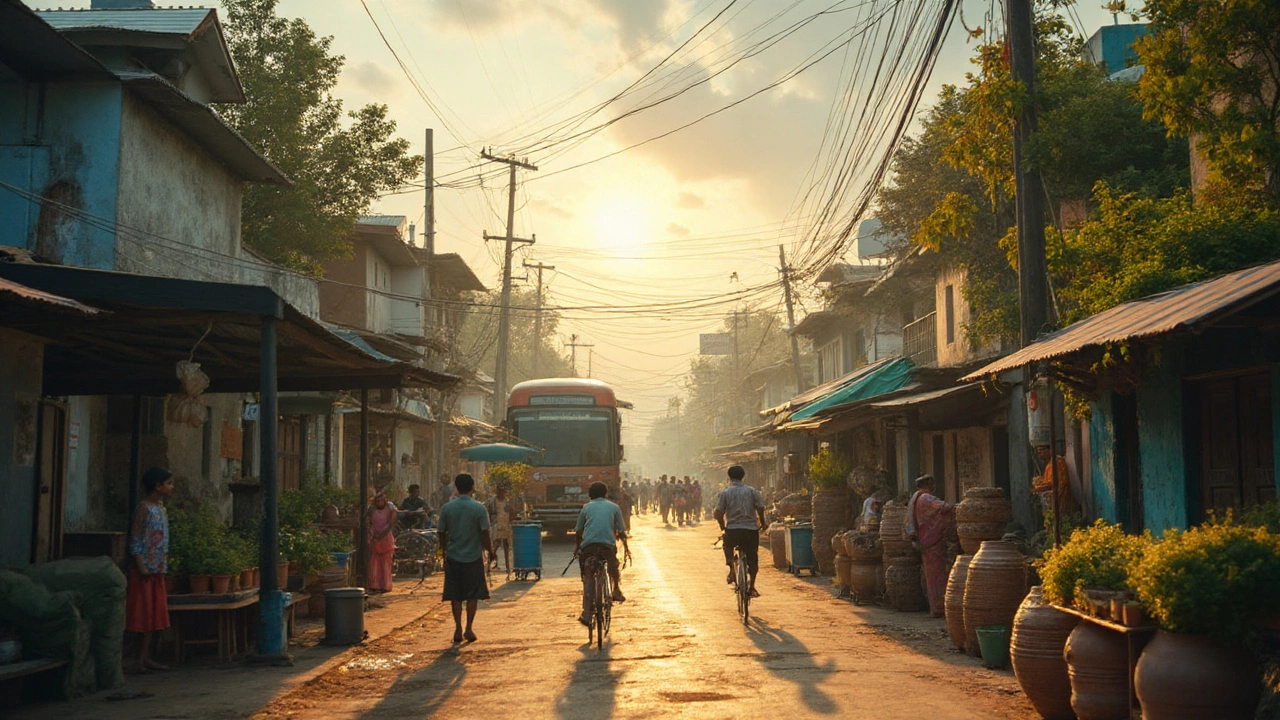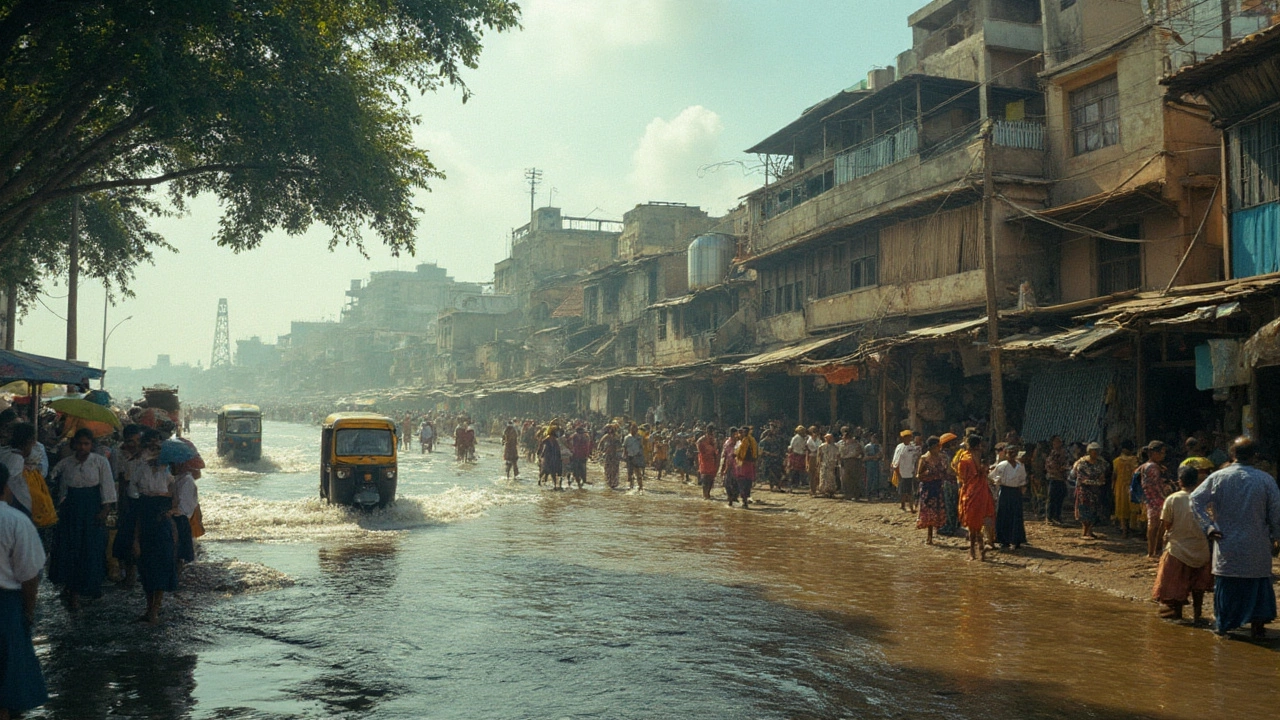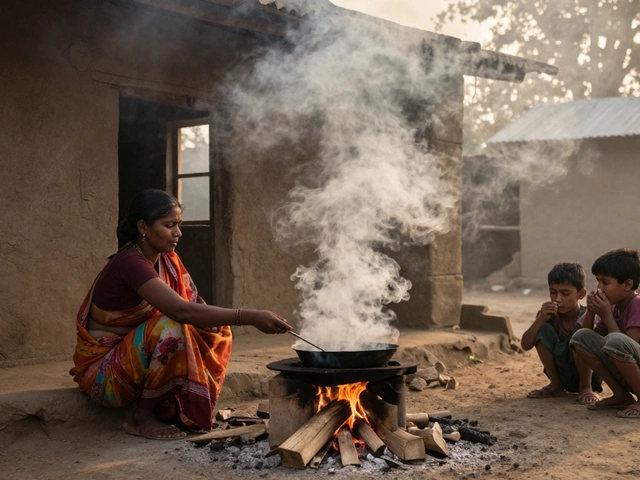TL;DR
- There’s no single “doomsday date.” Earth won’t become entirely uninhabitable this century, but some regions are on track to become dangerously hard to live in-mainly due to extreme heat, humidity, and water stress.
- Under current policies, the world is heading toward roughly 2.5-2.9°C of warming by 2100 (UNEP Emissions Gap Report 2024). That level pushes parts of South Asia, the Middle East, and the tropics into frequent deadly heat days without cooling.
- “Uninhabitable” isn’t a switch; it’s a sliding scale. As wet-bulb temperatures approach 31-35°C, healthy people can’t safely be outside for long. These extremes are already appearing briefly in a few places and will spread with more warming.
- Timelines: 2030s-1.5°C likely crossed in the multi-year average; 2040s-2060s-more regions see yearly lethal heat events; by late century under high emissions, hundreds of millions may need to adapt or move.
- Rapid cuts this decade plus adaptation cuts the risk dramatically. Cooling access, heat-ready cities, water security, and green cover buy time and save lives.
You clicked this because you wanted a real answer, not doom or sugar-coating. Here it is: the planet as a whole stays livable for people for a long time, but not evenly, and not for everyone in every place. The danger isn’t “the end of life on Earth.” It’s billions of people facing heat their bodies can’t tolerate, cities running short on water, coasts flooding more often, and farms missing predictable seasons. Managing that gap-between what the climate throws at us and what our systems can handle-is the whole game.
What “uninhabitable” really means-and realistic timelines
When people ask how long until the Earth is uninhabitable, they’re really asking two things: how bad the climate can get, and how much our bodies, homes, and cities can take. Science has clearer answers than you might think.
Start with the body. Humans can’t survive long when the air is both extremely hot and humid. The key metric is “wet-bulb temperature” (TW). It combines heat and moisture into one number. A TW of 35°C sustained for a few hours is the upper physiological limit for a healthy person in the shade with a breeze, even with water. That isn’t an opinion-physiologists have tested it (Sherwood & Huber, PNAS). Dangerous stress starts earlier, around TW 31-33°C, especially for older adults, outdoor workers, and people with health conditions.
Those kinds of extremes used to be theoretical. In the last decade, brief readings near or above TW 35°C have been recorded along the Persian Gulf and in parts of the Indus River basin. They’re still rare, but they’re happening. As average global warming climbs, days in the “can’t safely be outdoors” range increase fast and spread to new places.
Now zoom out. Climate projections are built on scenarios-different futures based on emissions. Three big ones cover our likely range:
- Fast cuts (roughly SSP1-2.6): strong policy, clean energy growth faster than now.
- Current policies: not worst-case, but not fast enough; where the world is trending in 2025.
- High emissions (SSP5-8.5): we keep burning a lot of fossil fuels and clear forests.
What do those mean in human terms? The table below sums up likely warming and the kind of stress that follows, based on major assessments like the IPCC Sixth Assessment (AR6), the World Meteorological Organization’s annual climate reports, and the 2024 UNEP Emissions Gap Report, plus peer-reviewed studies on heat thresholds and the “human climate niche.”
| Pathway | Global warming by 2100 (best estimate) | Extreme heat exposure | Sea level rise by 2100 (likely range) | People outside historical climate niche |
|---|---|---|---|---|
| Fast cuts (SSP1-2.6) | ~1.7-1.9°C | Dangerous heat days increase, but concentrated in hottest regions; many cities can adapt with cooling and urban design | ~0.44-0.76 m (IPCC AR6) | Low hundreds of millions |
| Current policies (2025 trajectory) | ~2.5-2.9°C | South Asia, Middle East, parts of Africa and the tropics see frequent lethal heat without cooling; outdoor work windows shrink | ~0.5-0.9 m (IPCC AR6 ranges; ice-sheet uncertainty adds tail risk) | ~1-3 billion by late century (Nature Sustainability, Xu et al.) |
| High emissions (SSP5-8.5) | ~3.3-4.4°C | Large regions face annual periods unsafe without AC; some coastal megacities struggle to stay functional | ~0.63-1.01 m likely; multi-meter over centuries increasingly locked in | 3+ billion; major climate migration pressures |
So when does it become an uninhabitable earth? For the whole planet, not this century. For certain places, especially where extreme heat and humidity overlap with poverty and weak infrastructure, the answer is “already at times,” and “years to decades sooner” without action.
Anchors for your timeline, using the latest science up to 2025:
- 2020s: Single years flirting with 1.5°C above preindustrial levels (WMO), with 2023 the hottest year on record and 2024-2025 challenging that. Heat records and flood extremes stack up.
- Early-mid 2030s: The multi-year average likely crosses 1.5°C (IPCC AR6). Coral reefs suffer mass losses; heat waves intensify.
- 2040s-2060s: On current policies, more cities hit annual runs of dangerous heat days; some agricultural zones see yield declines unless irrigation and practices change. Drought-then-flood whiplash stresses water systems.
- 2070s-2100: Under ~2.5-3°C warming, habitability becomes a property of wealth and design-AC, reliable power, shaded streets, water reuse. Without those, parts of South Asia, the Gulf, the Sahel, and equatorial zones face recurring periods that are effectively unlivable outdoors.
Two more pieces matter. First, sea level keeps rising for centuries, even if we stabilize temperatures, because oceans and ice sheets take a long time to adjust. Think “slow pressure” on coasts: more nuisance floods, higher storm surges, saltwater in groundwater. Second, “tipping points” are wildcards. The Atlantic overturning circulation (AMOC) is weakening; a collapse this century is still seen as unlikely by IPCC, but the chance isn’t zero. West Antarctic ice shows signs of instability. These are low-probability, high-impact shifts. They don’t change the next ten years, but they shape the risks our kids and grandkids face.
So we end up with a blunt truth. This isn’t an extinction story. It’s a fairness story: who gets cooling, who gets water, who gets to move, and who doesn’t. The faster we cut emissions and build heat-ready, water-smart cities, the fewer places cross the line from “hard” to “can’t live here without leaving.”

How to read your future risk: a simple local check + real-world examples
You don’t need a PhD or fancy software to get a decent read on your own city’s risk. Here’s a quick method I use, living in Bangalore, to sanity-check what’s coming and what to prioritize.
Heat and humidity baseline: Look up your city’s hottest month and typical relative humidity. If recent heat index (or “feels like” temperature) hit 50°C+ or wet-bulb topped 30-31°C even briefly, you’re already in the danger zone during extreme events.
Nighttime relief: Note the overnight lows during heat waves. If nights stay above 30°C with high humidity, bodies don’t recover. Hospitalizations jump. Cities with poor night cooling need aggressive shade, ventilation, and cooling centers.
Water security: Check groundwater trends and reservoir dependency. If your city relies on distant rivers or shrinking aquifers, plan for rationing in drought years. Track monsoon variability or dry-season length if you’re in the tropics.
Power reliability: Heat risk tracks power cuts. If peak-demand outages are common, prioritize local backup (rooftop solar + batteries where feasible), building efficiency, and passive cooling before the next heat season.
Green and gray infrastructure: Do you have tree cover on streets, cool roofs, shade at bus stops, reflective pavements, and stormwater drains that don’t clog? These are not cosmetic. They cut city-scale temperatures and flood risk.
Livelihood exposure: How many people must work outdoors (construction, delivery, farms)? This sets your city’s health risk. Shorter shifts, shaded rest areas, and mandated cool-down breaks save lives.
Now, some lived and local examples that bring the numbers down to earth:
South Asia heat: In 2024, parts of northwest India touched 50°C on multiple days. Even where the absolute dry-bulb temperature was lower, hot and humid nights made it brutal. In cities like Delhi and Kolkata, the heat index held in the “extreme danger” zone for hours. States rolled out Heat Action Plans-cooling centers, water points, adjusted work hours-and still struggled.
Bangalore’s warning signs: We’re not the hottest city in India, but humidity spikes and warmer nights have nudged up the heat index in recent summers. When overnight lows stay in the high 20s and the wind dies, bedrooms turn into ovens. AC access splits experience-some breeze through the night, others can’t sleep and show up at clinics with dehydration or heat stress.
Persian Gulf limits: Places along the Gulf coast have logged wet-bulb readings near 35°C for short periods. It’s a preview of a future where outdoor work gets paused during parts of the day for weeks each year unless shade, cooling, and scheduling change.
Coastal squeeze: Jakarta, Lagos, Miami, and parts of the Sundarbans live with compound risk-gradual sea-level rise plus heavy-rain floods on top of high tides. Even modest sea-level rise multiplies flood frequency. You don’t need a dramatic storm for knee-deep water to swamp streets.
Where does this leave you? Use a simple rule of thumb: if your city currently sees a handful of days each year with a heat index above 52°C or wet-bulb above 30-31°C, and your power is shaky, you’re on a short clock to invest in heat adaptation. If your coast floods during king tides already, assume decades, not centuries, to plan protective works or managed retreat for the lowest spots.
Adaptation checklist you can actually use this season:
Home: Add shade first (awnings, outdoor blinds, trees), then cool roofs or reflective paint, then ventilation. Insulation isn’t just for cold; it keeps heat out.
Building managers: Stagger loads (elevators, chillers), test backup power, and add thermal storage or ice-battery systems where practical to shave peak heat hours.
Workplaces: Implement heat safety protocols-water, rest, shade; reschedule outdoor work to mornings/evenings; track wet-bulb, not just temperature.
Neighborhoods: Plant native, drought-tolerant trees where people walk and wait. Replace dark pavements in hotspots with high-albedo or permeable surfaces.
City leaders: Publish a Heat Action Plan before the season-early warnings, SMS alerts, cooling centers, hospital surge plans, water access, and worker protections. Update building codes for cool roofs and cross-ventilation.
Parents and elders: Create a heat buddy system. Check in twice daily during heat alerts. Stock oral rehydration salts; know the signs of heat stroke.
Water and food are the other half of “habitability.” Cities survive heat if taps run and food arrives. A practical way to cut your risk:
Water: Fix leaks first (many utilities lose 20-40% to leakage), meter big users, recycle treated wastewater for parks/industry, harvest rain on every roof. This is faster and cheaper than new dams.
Food: Diversify suppliers and protect local peri-urban farms from being paved over. Heat-resilient crop varieties and shade nets help farmers bridge hot spells.
None of this replaces cutting emissions. Adaptation buys time. Mitigation decides how much time we need to buy.

What we can still change-policy levers, personal moves, and quick answers to big questions
The most common pushback I hear is: “Isn’t 1.5°C already gone?” The fair answer is: we’re likely to see the average cross 1.5°C in the 2030s, yes, but every tenth of a degree matters. There’s no cliff at 1.5 and paradise at 1.4. Emissions this decade set whether we end up nearer 1.8°C, 2.6°C, or 3.5°C. Those are three different worlds for heat stress, sea level, and food security.
Mitigation: the big gears that move the timeline
Power: Wind, solar, and storage were the fastest-growing sources in 2024-2025. The cheaper they get, the faster coal and gas exit. Grid upgrades and permitting reform unlock more capacity than any single new technology.
Industry: Heat pumps for low/medium heat, green hydrogen for steel and fertilizer, and carbon capture for cement’s process emissions. Standards plus tariffs can shift heavy industry in under a decade.
Transport: Two parallel tracks-electrify everything you can, and build cities where you don’t need a car for every trip. Buses with dedicated lanes and shaded stops beat traffic and heat.
Agriculture/land: Stop deforestation cold. Pay for verified forest protection and restoration. Support farmers to switch to climate-smart practices-precision irrigation, cover crops, agroforestry.
Adaptation: the gears that keep places livable while we cut emissions
Heat-ready building codes: Cool roofs, shade, ventilation, and backup power for critical services as standard.
Health systems: Heat early-warning systems integrated with clinics; stock cooling supplies; train staff for heat illness surges.
Water security: Tiered pricing to curb waste, leak reduction, aquifer recharge, wastewater reuse, and drought triggers that kick in early.
Urban design: Trees where people are, not just in parks; shaded sidewalks; reflective streets in hotspots; splash pads and water misters in public squares during heat alerts.
Insurance and finance: Risk-based pricing paired with public support so low-income households can retrofit. Fund city-scale shade and cooling like we fund roads.
Mini‑FAQ
Will climate change make humans go extinct this century? No. The risk this century is mass suffering, not extinction. But that’s not a small thing. We’re talking about lives, livelihoods, and where billions can safely live.
Is 2.5-2.9°C by 2100 really where we’re headed? That’s the mid-range estimate from the UNEP Emissions Gap Report 2024 under current policies. Stronger policies already on the books could improve that; delays could worsen it.
What about tipping points like AMOC collapse? IPCC AR6 says a collapse this century is unlikely, but confidence is low and some studies argue for higher risk. If it did happen, Europe cools regionally, tropical rainbelts shift, and global weather patterns get disrupted. It’s a risk multiplier, not an automatic apocalypse.
When will my city become uninhabitable? That depends on heat + humidity + water + power. If wet-bulb 31-33°C shows up every summer and your grid can’t handle AC demand, daily life gets very hard within a decade. If you have reliable cooling, trees, and water recycling, you can manage even at higher global warming levels.
Can we adapt everywhere? Not indefinitely. There are physiological limits. But smart adaptation can turn “unlivable” into “tough but manageable” for many places, especially if we also cut emissions fast.
Does planting trees fix this? Trees help a lot in cities-shade can drop street temperatures by several degrees and lower AC demand. But trees can’t replace cutting fossil fuel emissions.
Cheat‑sheet: quick rules of thumb
Wet-bulb 35°C = dangerous limit; 31-33°C already life‑threatening for many without cooling.
If your hottest-month nights now average 28-30°C and humidity is high, plan aggressive heat adaptation within 3-5 years.
If your city floods in heavy rain once a year, assume it’ll be several times a year by mid‑century unless drainage is upgraded.
Every 0.5°C of global warming makes heat extremes much more frequent; don’t wait for 2°C to act.
Cutting peak electricity demand during heat waves (cool roofs, pre‑cooling, efficient AC) is often the fastest life‑saving move a city can make.
Pitfalls to avoid
Relying only on average temperature. Extremes kill, not averages.
Betting only on AC. If power fails during a heat wave, you need shade, ventilation, and community cooling centers.
Ignoring nighttime heat. Many heat deaths happen at night when bodies can’t cool down.
Fixating on 2100. Your city’s risk can jump in the next five to ten years as extremes stack up.
Credible sources behind these timelines
IPCC Sixth Assessment (AR6) and 2023 Synthesis Report for warming and sea-level ranges.
World Meteorological Organization’s State of the Global Climate updates for records and near‑term warming context.
UNEP Emissions Gap Report 2024 for current-policy trajectories.
Sherwood & Huber (PNAS) for human heat tolerance limits (wet‑bulb thresholds).
Nature Sustainability (Xu et al.) on the “human climate niche” and population exposure across warming levels.
Next steps by persona
Parents and caregivers: Create a home heat plan-where to go if the power fails, how to keep rooms cool without AC (cross‑ventilation, wet sheets on windows, shaded courtyards), and who to check on. Stock rehydration salts and a thermometer.
City planners: Map heat islands down to the block. Mandate cool roofs on all new builds and retrofits. Plant shade where people actually are-near bus stops, schools, markets. Integrate heat alerts with health services and labor departments.
Business owners: Shift work hours during heat alerts. Install shade and misting in waiting areas. Offer water and mandated breaks. Audit energy loads and insulate to cut AC costs before the next peak season.
Students and renters: Take small wins-reflective curtains, fans aimed at open windows at night, indoor plants for humidity buffering, and a buddy network for check‑ins during heat waves.
Developers and housing boards: Prioritize cross‑ventilation, high‑albedo exteriors, and courtyards in new designs. Budget for on‑site solar + storage to keep essential services running in heat emergencies.
Troubleshooting common scenarios
“Our city can’t afford big upgrades.” Start with the cheapest, fastest moves that save lives: early warnings, cool roofs on public buildings, shade at transit stops, and labor protections during heat alerts.
“Residents won’t change behavior.” Make it easy: free reflective paint kits, tree‑planting drives with maintenance support, and SMS heat alerts that include simple actions.
“Grid is maxed out.” Reduce peak demand with cool roofs and pre‑cooling in public buildings, staggered office hours, and targeted incentives for efficient AC upgrades.
“Water is the bottleneck.” Fix leaks, meter big users, tier prices to protect basic needs but curb waste, and accelerate wastewater reuse for non‑potable demands.
One last reality check. From Bangalore, the change isn’t abstract anymore. Nights run warmer. Afternoon errands feel riskier. Traffic and glass towers trap heat. But I’ve also seen how quick fixes-shade over a bus queue, reflective roofs on a school-make a street feel human again. Scale that up, cut emissions hard, and the “when does it become uninhabitable?” question turns into something better: “how do we keep our city a place where people can thrive?” That part is still up to us.



